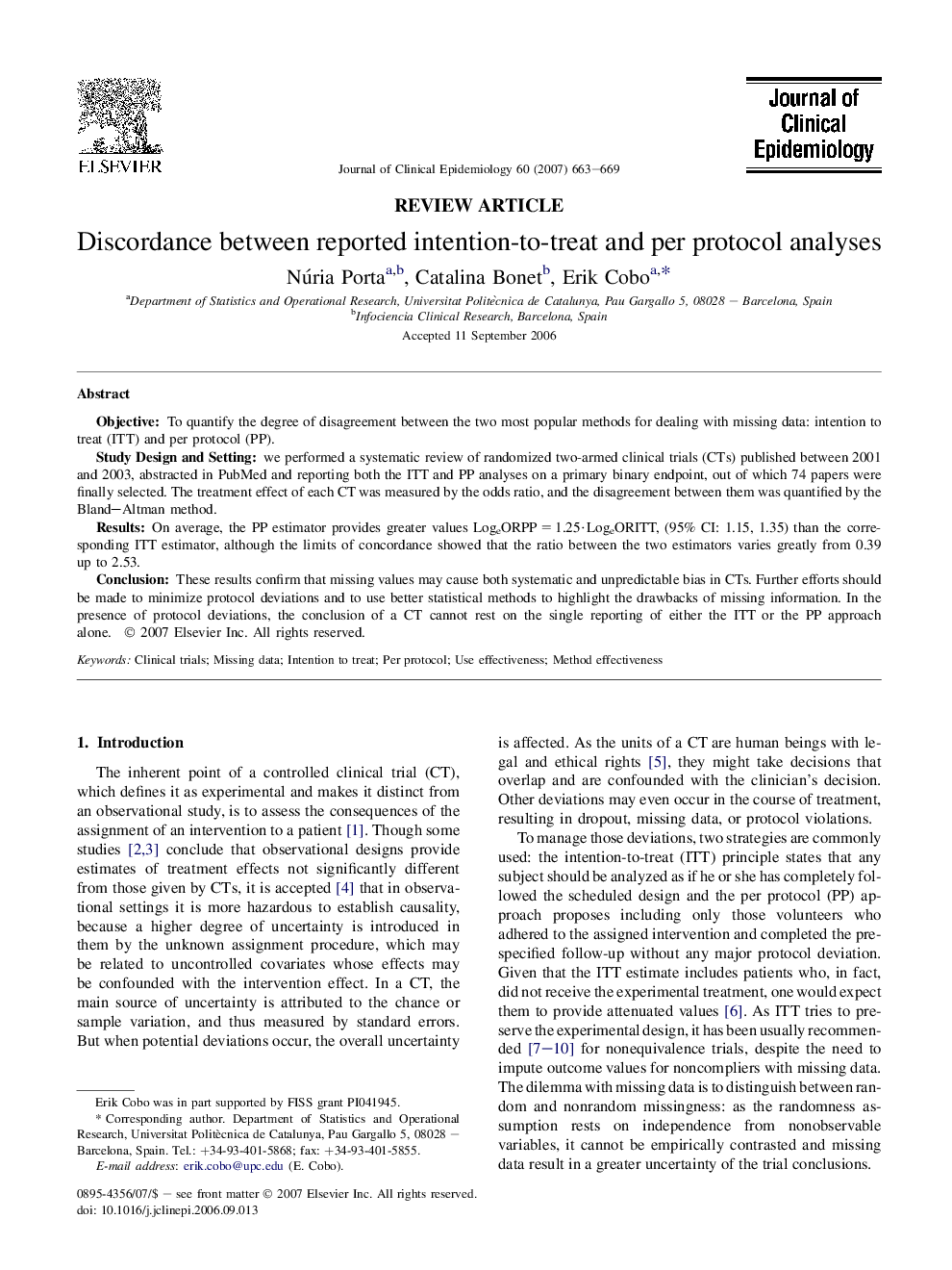| Article ID | Journal | Published Year | Pages | File Type |
|---|---|---|---|---|
| 1082821 | Journal of Clinical Epidemiology | 2007 | 7 Pages |
ObjectiveTo quantify the degree of disagreement between the two most popular methods for dealing with missing data: intention to treat (ITT) and per protocol (PP).Study Design and SettingWe performed a systematic review of randomized two-armed clinical trials (CTs) published between 2001 and 2003, abstracted in PubMed and reporting both the ITT and PP analyses on a primary binary endpoint, out of which 74 papers were finally selected. The treatment effect of each CT was measured by the odds ratio, and the disagreement between them was quantified by the Bland–Altman method.ResultsOn average, the PP estimator provides greater values LogeORPP = 1.25·LogeORITT, (95% CI: 1.15, 1.35) than the corresponding ITT estimator, although the limits of concordance showed that the ratio between the two estimators varies greatly from 0.39 up to 2.53.ConclusionThese results confirm that missing values may cause both systematic and unpredictable bias in CTs. Further efforts should be made to minimize protocol deviations and to use better statistical methods to highlight the drawbacks of missing information. In the presence of protocol deviations, the conclusion of a CT cannot rest on the single reporting of either the ITT or the PP approach alone.
